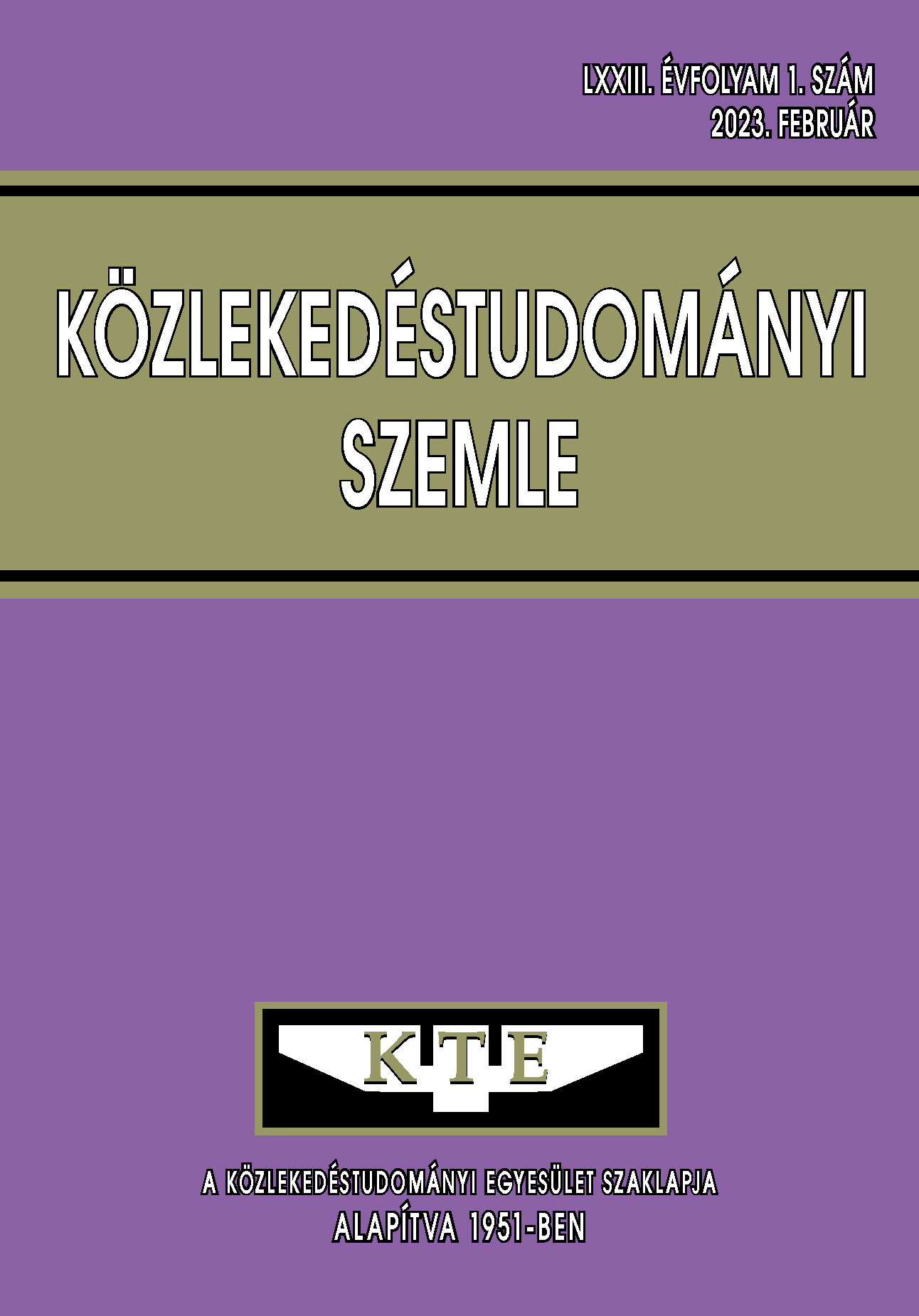Risks associated with automated driver assistance systems and preparation for their management in driver training
Abstract
Driver assistance systems, in addition to their safety benefits, also carry risks. Drivers need to be trained to reduce these risks.References
SAE J3016TM LEVELS OF DRIVING AUTOMATION https://www.sae.org/binaries/content/assets/cm/content/blog/sae-j3016-visual-chart_5.3.21.pdf
Driel, C., Beukel, A. P., Veders, N., Huijboom, C. (2019) Driver training and testing in the era of automated driving: Status quo and future directions. 13th ITS European Congress, Brainport, the Netherlands, 3-6 June 2019. https://rapptrans.de/wp-content/uploads/rapp_2019_its_prautocol-driver-training.pdf
AZ EURÓPAI PARLAMENT ÉS A TANÁCS (EU) 2019/2144 RENDELETE https://eur-lex.europa.eu/legal-content/HU/TXT/HTML/?uri=CELEX:32019R2144&from=hu
New safety features in your car. European Commission https://ec.europa.eu/docsroom/documents/29343
Driver Assistance Systems: The ultimate guide to car safety tech. https://www.motor1.com/features/346112/driverassistance-systems-guide/
Levels of autonomous driving, explained. https://www.jdpower.com/cars/shoppingguides/levels-of-autonomous-drivingexplained#:~:text=An%20example%20of%20Level%202%20driving%20automation%20is,new%20hands-free%20partial%20driving%20automation%20technology%20from%20Ford
New Mercedes Drive Pilot challenges Tesla with Level 3 tech. https://www.autoblog.com/2022/03/20/mercedes-drive-pilot/
Beukel, A. P., Veders, N., Driel, C. J. G., Huijboom, C. (2019) Does the learner driver remain in control of assistance systems? 13th ITS European Congress, Brainport, the Netherlands, 3-6 June 2019. https://rapp-trans.de/wp-content/uploads/rapp_2019_its_prautocol-remainingcontrol.pdf
Spulber, A. (2016) Impact of automated vehicle technologies on driver skills. Michigan Department of Transportation, Center for Automotive Research. https://www.cargroup.org/wp-content/uploads/2017/02/IMPACT-OF-AUTOMATED-VEHICLETECHNOLOGIES-ON-DRIVER-SKILLS.pdf#:~:text=As%20driving%20functions%20become%20shared%20between%20drivers%20and,while%2C%20at%20the%20same%20t ime%2C%20performing%20secondary%20tasks
Sullivan, J.M., Flannagan, M.J., Pradhan, A.K. & Bao, S. (2016). Literature Review of Behavioral Adaptations to Advanced Driver Assistance Systems (Technical Report). Washington, D.C.: AAA Foundation for Traffic Safety. https://aaafoundation.org/wp-content/uploads/2017/12/BehavioralAdaptationADAS.pdf
Drivers Too Reliant on Advanced Driver-Assistance Systems, Research Finds. https://www.counterman.com/drivers-too-relianton-advanced-driver-assistance-systemsresearch-finds/
Behavioural adaptation and road safety: theory, evidence, and action. https://swov.nl/en/publicatie/behavioural-adaptationand-road-safety-theory-evidence-andaction
Driver Training Guidelines for Advanced Driver-Assistance Systems. https://safed.vtti.vt.edu/wp-content/uploads/2020/07/Driver-Training-Guidelines_2018.pdf
/2005. (IV. 21.) GKM rendelet.njt.hu/jogszabaly/2005-24-20-0L
TANTERVI ÉS VIZSGAKÖVETELMÉNYEK a „B” kategóriás járművezető-képző tanfolyamok számára. https://vizsgakozpont.hu/uploads/2020/dokumentumok/47-tantervi-es-vizsgakovetelmenyek-b-kategoriasjarmuvezeto-kepzo-tanfolyamokszamara_2017-01-01-tol.pdf
Drexler, D., Takács, A., Nagy T., Haidegger, T. (2019) Handover Process of Autonomous Vehicles – Technology and Application Challenges. Acta Polytechnica Hungarica Vol. 16, No. 9, 2019 http://acta.uni-obuda.hu/Drexler_Takacs_Nagy_Haidegger_96.pdf
Articles published electronically are open access (OJS), freely available online and can be downloaded. Authors of articles are not charged any publication or publishing costs (APC). Users have the right to read, download, copy, print, and search the articles, or share the full text with a link.
Authors must declare that their submission has not been previously published in another journal, that financial support has been acknowledged, and that the list of references is complete and accurate, including specification of URLs and DOIs (if available). When submitting a draft article, each author approves the submitted version. Authors guarantee that the article is their original work. Authors are required to participate in the peer review process, follow the advice of reviewers, meet the prescribed deadlines, and, if any, withdraw the submission or correct errors.
All submitted articles are subject to peer review, where the editors request an independent evaluation from at least one expert, ensuring that the reviewer(s) have no conflicts of interest with the authors. The final decision is made by the Editor-in-Chief, who takes into account the evaluations and the suggestions of the editors. The editors and reviewers treat the submission confidentially.
The publisher and editors are committed to maintaining high ethical standards and to preventing publications that involve research misconduct. They follow the COPE guidelines on such ethical issues.
The authors retain copyright and grant the journal the right of first publication under the Creative Commons License (https://creativecommons.org/licenses/by-nc-nd/4.0), which allows others to share the work, while acknowledging the authorship of the work and the first publication in the journal.
The journal archives all published articles, and the journal's owner, the Hungarian Society of Transportation Sciences, will continue to operate the database even if the journal ceases to be published.















